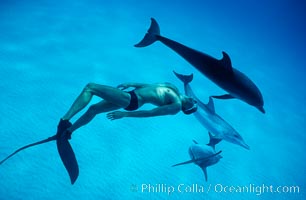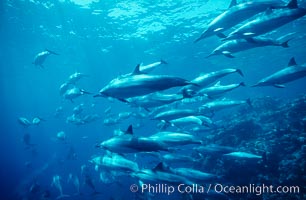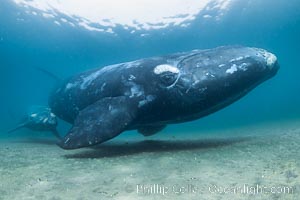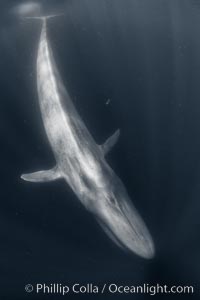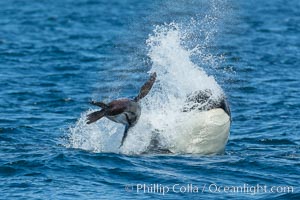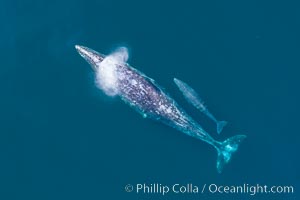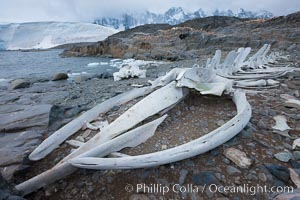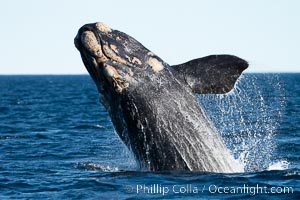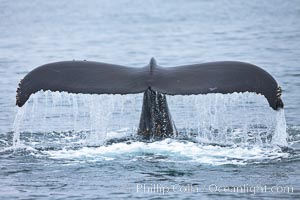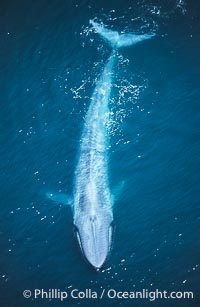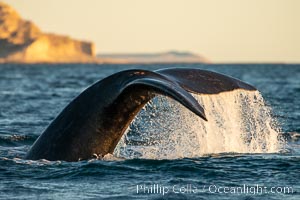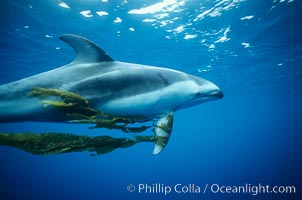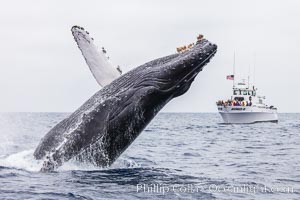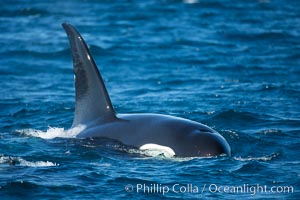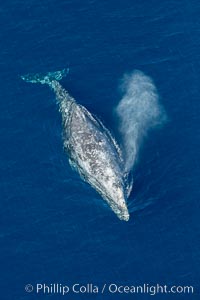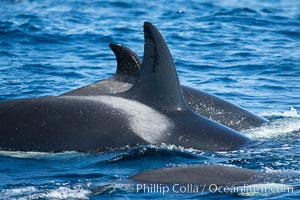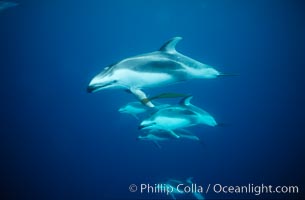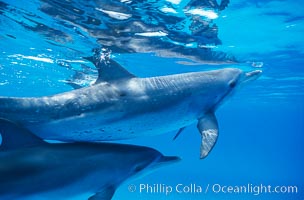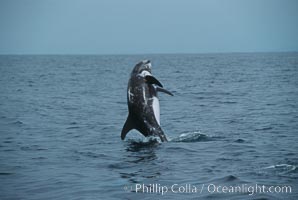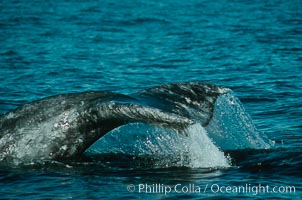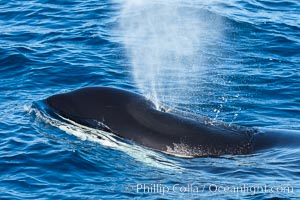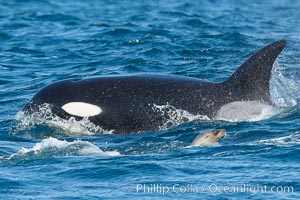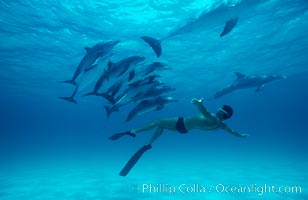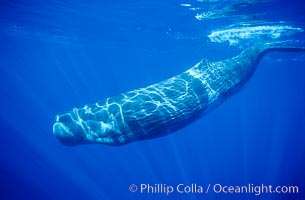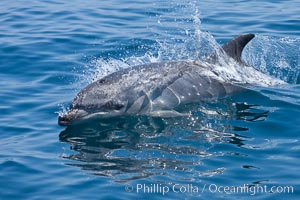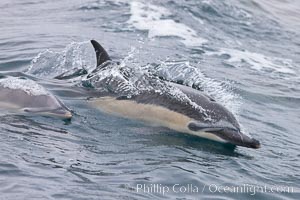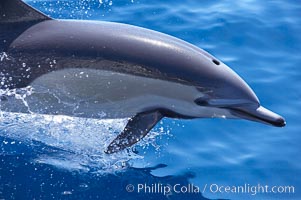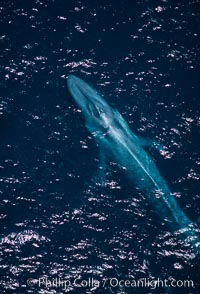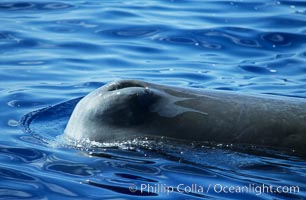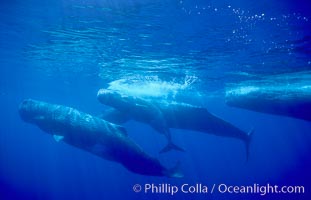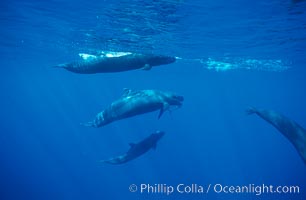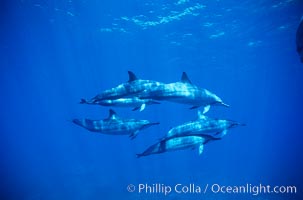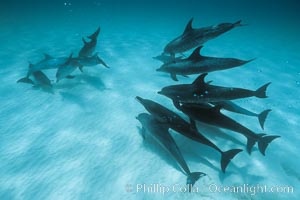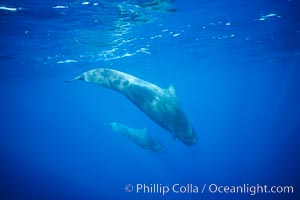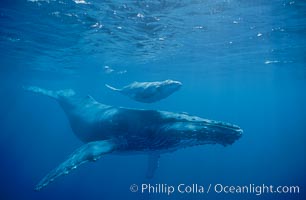
North Pacific humpback whales, a mother and calf pair swim closely together just under the surface of the ocean. The calf will remain with its mother for about a year, migrating from Hawaii to Alaska to feed on herring. Megaptera novaeangliae, Molokai, Hawaii.
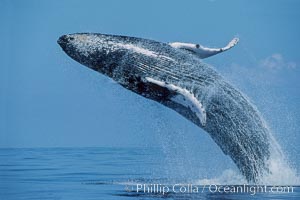
Humpback whale breaching, near Molokai, Hawaii. Megaptera novaeangliae. It is suspected the breaching often has a communicative purpose which depends on the behavioral context of the moment.
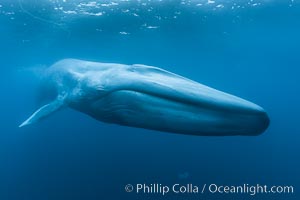
Blue whale close-up underwater portrait, taken breath-hold diving just a few feet away from the enormous blue whale with a fisheye lens.
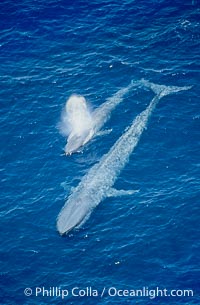
Blue Whale Aerial Photo. Two blue whales, a mother and her calf, swim through the open ocean in this aerial photograph. The calf is blowing (spouting, exhaling) with a powerful column of spray. Balaenoptera musculus.
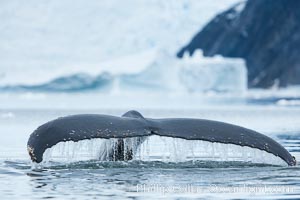
Humpback whale in Antarctica. A humpback whale swims through the beautiful ice-filled waters of Neko Harbor, Antarctic Peninsula, Antarctica.
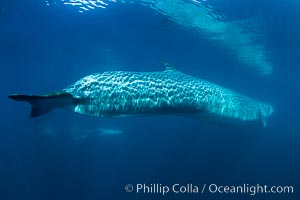
Fin whale underwater photograph. Note the thickness of the caudal stem, one of the world's most massive assemblages of musculature that drives its huge fluke up and down and powers it through the ocean on its epic travels.
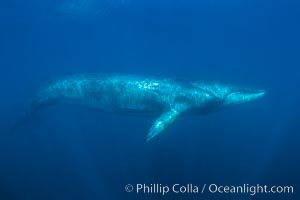
Fin whale (Balaenoptera physalus) underwater photo, full body shot, note distinctive white coloration on the right side of the whales rostrum.
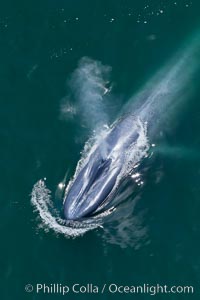
Aerial photo of a blue whale. Blue whale, exhaling as it surfaces from a dive, aerial photo taken off the coast of California.
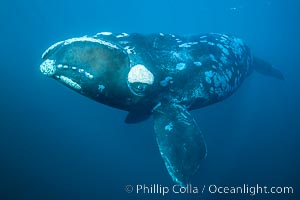
Portrait of a Southern Right Whale Underwater, Eubalaena australis. This particular right whale exhibits a beautiful mottled pattern on its sides.
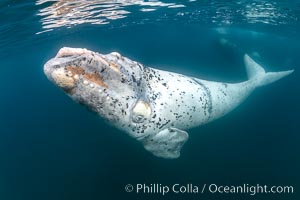
White southern right whale calf underwater, Eubalaena australis. About five per cent of southern right whales are born white due to a condition known as grey morphism and will gradually turn dark as they age. They are not albino (which is a complete lack of pigmentation). Sometimes referred to as ""brindled"", the white coloration is a recessive genetic trait and only lasts a few months. Typically, but not always, white calves will become much darker as they mature but will still somewhat lighter than normal even as adults.
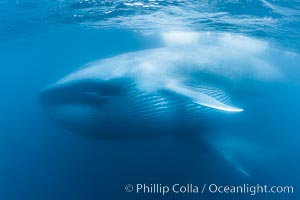
Blue whales (mother and calf) underwater feeding, the adult blue whale's throat is inflated after engulfing a huge mouthful of krill.
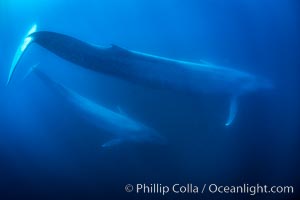
Blue whales, adult and juvenile (likely mother and calf), swimming together side by side underwater in the open ocean.
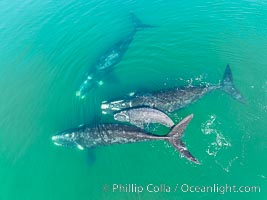
Mother and calf southern right whales are seen here as part of a larger courtship group, with adult males interested in mating with the mother. The calf has no choice but to stay by her mother's side during the courting activities.
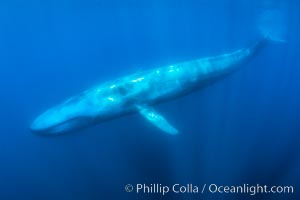
A huge blue whale swims through the open ocean in this underwater photograph. The blue whale is the largest animal ever to live on Earth.
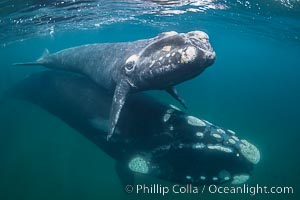
Mother and calf southern right whales underwater. The calf swims close to its mother but, if the mother is accepting, the calf will be allowed to come close to the photographer and check him out.
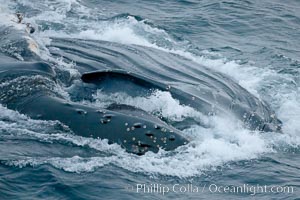
Humpback whale lunge feeding on Antarctic krill, with mouth open and baleen visible. The humbpack's throat grooves are seen as its pleated throat becomes fully distended as the whale fills its mouth with krill and water. The water will be pushed out, while the baleen strains and retains the small krill.
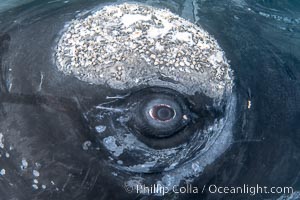
Southern right whale eyeballing the camera up close, Eubalaena australis. Whale lice can be seen clearly in the folds and crevices around the whales eye and lip groove.
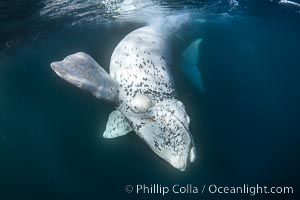
White southern right whale calf underwater, Eubalaena australis. About five per cent of southern right whales are born white due to a condition known as grey morphism and will gradually turn dark as they age. They are not albino (which is a complete lack of pigmentation). Sometimes referred to as ""brindled"", the white coloration is a recessive genetic trait and only lasts a few months. Typically, but not always, white calves will become much darker as they mature but will still somewhat lighter than normal even as adults.
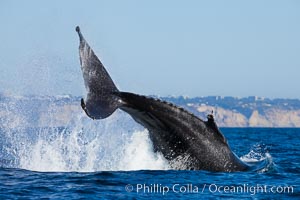
A peduncle throw, or tail lob, this humpback whale (Megaptera novaeangliae) uses its long pectoral fins as levers to swing its fluke and caudal stem out of the water, flinging water everywhere.
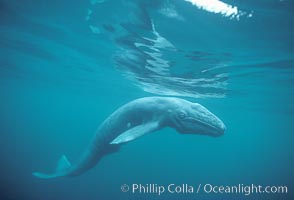
A neonate gray whale calf, born just hours before, still exhbiting embryonic folds in the skin along its side. This baby gray whale was born in the cold waters of Big Sur, far to the north of the Mexican lagoons of Baja California where most gray whale births take place. Monterey, California, Eschrichtius robustus.
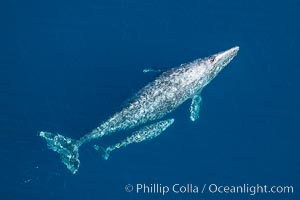
Aerial photo of gray whale calf and mother. This baby gray whale was born during the southern migration, far to the north of the Mexican lagoons of Baja California where most gray whale births take place.
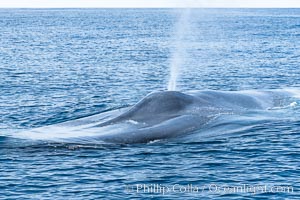
Blue whale, exhaling in a huge blow as it swims at the surface between deep dives. The blue whale's blow is a combination of water spray from around its blowhole and condensation from its warm breath.
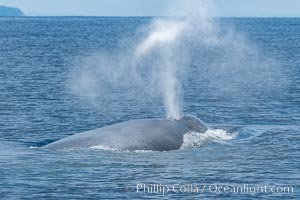
Blue whale, exhaling in a huge blow as it swims at the surface between deep dives. The blue whale's blow is a combination of water spray from around its blowhole and condensation from its warm breath.
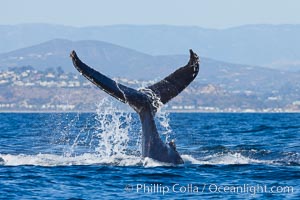
A humpback whale raises it fluke out of the water, the coast of Del Mar and La Jolla is visible in the distance.
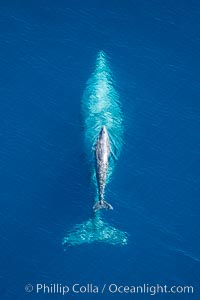
Aerial photo of gray whale calf and mother. This baby gray whale was born during the southern migration, far to the north of the Mexican lagoons of Baja California where most gray whale births take place.
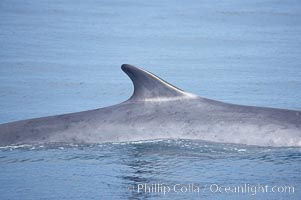
Fin whale dorsal fin. The fin whale is named for its tall, falcate dorsal fin. Mariners often refer to them as finback whales. Coronado Islands, Mexico (northern Baja California, near San Diego).
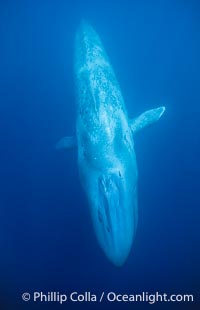
Underwater photo of a blue whale, Balaenoptera musculus, the largest animal ever to inhabit earth, swims through the open ocean, in this underwater photograph.
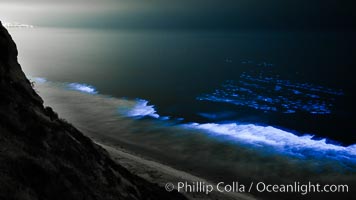
Bottlenose dolphins swim through red tide, hunt a school of fish, lit by glowing bioluminescence caused by microscopic Lingulodinium polyedrum dinoflagellate organisms which glow blue when agitated at night.
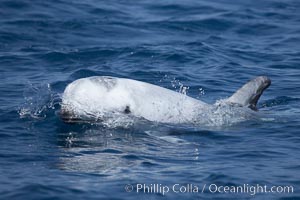
Rissos dolphin. Note distinguishing and highly variable skin and dorsal fin patterns, characteristic of this species. White scarring, likely caused by other Risso dolphins teeth, accumulates during the dolphins life so that adult Rissos dolphins are usually almost entirely white.
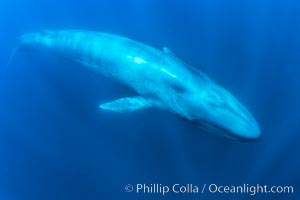
A huge blue whale swims through the open ocean in this underwater photograph. The blue whale is the largest animal ever to live on Earth.
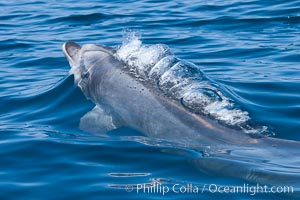
Bottlenose dolphin (Tursiops truncatus), bubbles forming in its exhalation just below the surface of the ocean, offshore of San Diego.
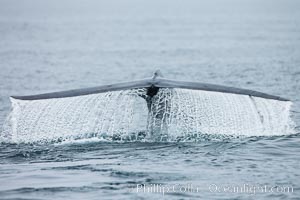
Blue whale (Balaenoptera musculus) raising its fluke to dive, Channel Islands, Santa Barbara, California.
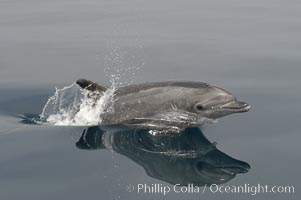
Pacific bottlenose dolphin breaches the ocean surface as it leaps and takes a breath. Open ocean near San Diego. Tursiops truncatus.
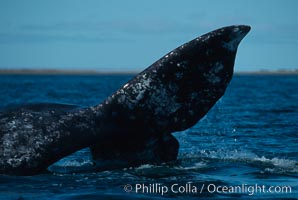
Gray whale, Laguna San Ignacio, Mexico. Fluke raised during courtship competition. Eschrichtius robustus.
